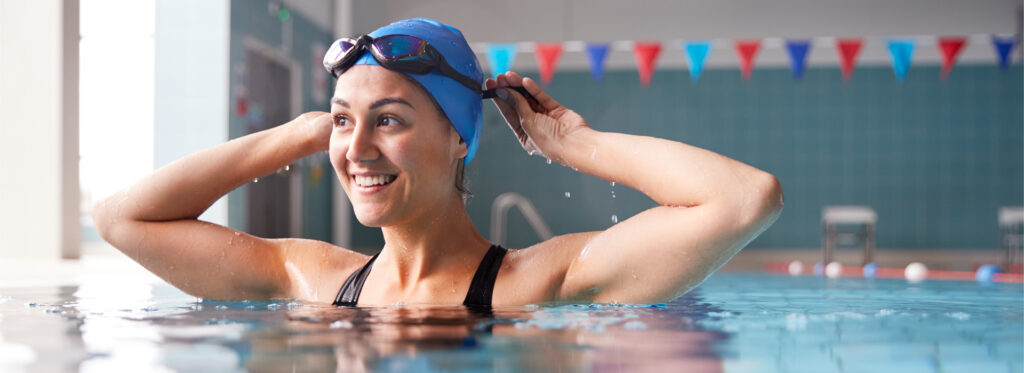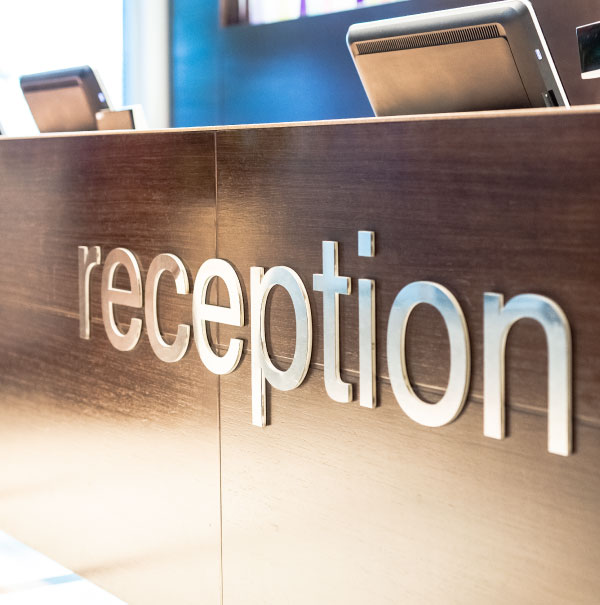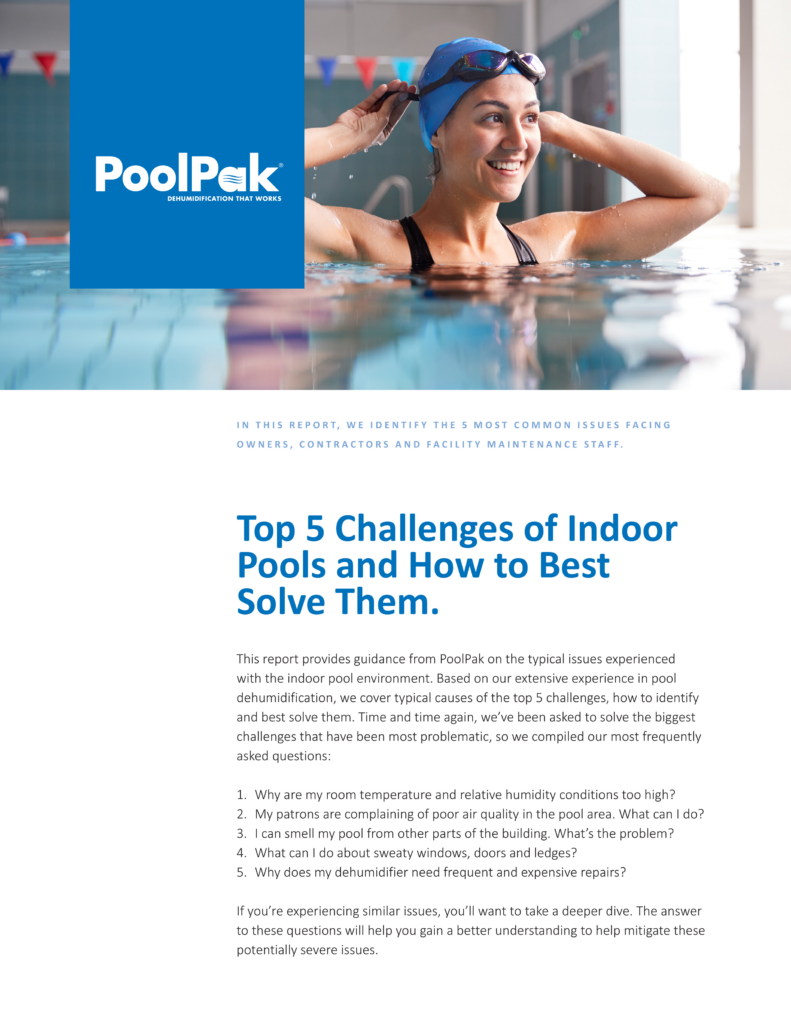
Time and time again, we’ve been asked to solve the biggest challenges with the indoor pool environment. Based on our extensive experience in pool dehumidification, we’ve identified the top five challenges of indoor pools, their typical causes, and how to best solve them.
Here’s challenge number three…
A Pool Smell That Extends to Other Parts of the Building
While it’s true indoor pools can be perfectly safe and healthy environments with good air quality, they must also be contained environments. After all, even great quality air from a pool room is not air you’d want to have mixing into the front desk area or other parts of the facility.
Why Can I Smell the Pool Without Being Near the Pool?
Normally, indoor pool rooms should be contained from other areas of the building they are within. This is accomplished through a number of means, including:
- A physical airlock or vestibule to enter the pool room.
- A separate HVAC (dehumidification) system with its own ductwork.
- The pool room is kept at a negative air pressure.
- A vapor barrier ensuring the higher moisture levels in the pool area stay in the pool area.
These measures ensure that the environment is a closed system for the comfort of all building occupants, including patrons and employees.
Sometimes, however, air can drift out of the room. A common cause is related to the dehumidification system. Indoor pool dehumidification systems commonly include exhaust fans that ensure the environment is at negative pressure. Generally, the exhaust fan is separate from the dehumidifier; however, they can sometimes be packaged in with the dehumidifier as well. Ideally the exhaust air intake will be located strategically, such as over a spa if the pool has one.
If the exhaust fans are off, or not at the right speed, then they may not be exhausting enough air to the outside to keep the space negative. As a result, the code-required outdoor air that the dehumidifier introduces to the space will be greater and result in a positive-pressure situation that pushes air out to the rest of the facility.

Additionally, a positive-pressure pool room would worsen the phenomena known as vapor migration. This is particularly acute during cold weather, where high pressure moisture inside the pool room tries to migrate through the building envelope to equalize with the lower pressure moisture levels outdoors. While this is a predictable and normal occurrence, it is vital that it is mitigated by special design of the vapor barrier in the building envelope during construction. Anything but a negative air pressure indoor pool exacerbates moisture trying to migrate by forcing air through the envelope.
If you find that you can smell your pool room without being in it, the doors/vestibule to the room should be checked to ensure it is properly sealed. Then, examine the exhaust system to ensure it is removing enough air from the space for negative pressure. It should be exhausting 10–20% more air in CFM than is being brought in from the outdoors. Because indoor pool environments can be complex, it may be valuable to bring in an experienced expert as they will be familiar with this particular problem and how to resolve it.
Of course, another thing to keep in mind is that your indoor pool should not have a strong acidic or chlorine smell. This is an indicator of a potentially hazardous environment and should be addressed as quickly as possible.
